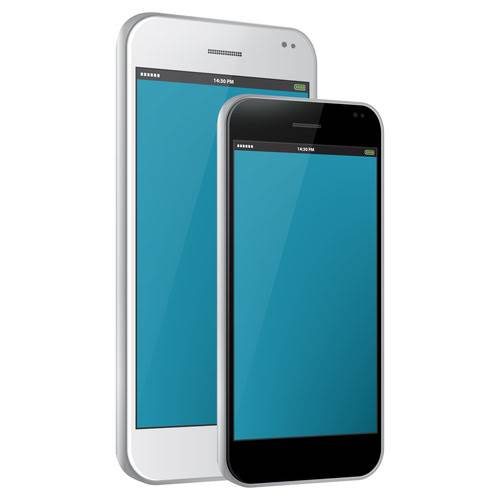System Development Lifecycle SDLC Information Technology Michigan Tech
SDLC methodologies fit within a flexibility spectrum ranging from agile to iterative to sequential. According to the Waterfall method, the software development process goes through all the SDLC phases with no overlapping and consists of a single development cycle. According to the fact that it is a linear-sequential life cycle model, any phase in the development process can begin only if the previous one is complete.

Relevant questions include whether the newly implemented system meets requirements and achieves project goals, whether the system is usable, reliable/available, properly scaled and fault-tolerant. Process checks include review of timelines and expenses, as well as user acceptance. In the Kanban framework, the team creates a visual representation of their tasks and statuses by using sticky notes on a physical whiteboard or by using a dedicated software application.
Spiral Software Development Life Cycle
Each iteration of the Spiral methodology begins with predicting potential risks and the best way to avoid or mitigate them. A popular example of the Iterative model is the Rational Unified Process, a.k.a. RUP, developed by IBM’s Rational Software division. Once the system design documentation is complete, the whole task is divided into modules or units.
However, overreliance on customer feedback could lead to excessive scope changes or end the project midway. When teams develop software, they code and test on a different copy of the software than the one that the users have access to. The software that customers use is called production, while other copies are said to be in the build environment, or testing environment. Agile has several advantages over traditional methods, including improved customer satisfaction through continuous feedback, increased speed of development, and better collaboration between teams. However, it also has some drawbacks that should be considered before implementing this methodology. Overall, the Agile development model is a powerful tool for software developers but has drawbacks.
Advantages of Using SDLC (Model-Wise)
This high-risk SDLC model throws most of its resources at development and works best for small projects. It lacks the thorough requirements definition stage of the other methods. At this stage, the goal is to deploy the software to the production environment so users can start using the product. However, many organizations choose to move the product through different deployment environments such as a testing or staging environment. Spiral methodology passes through four phases repeatedly until the project is completed. These four phases are planning, risk analysis, engineering, and evaluation.

Even more important is assembling a solid team of skilled talent committed to moving the project forward through every unexpected challenge or setback. One of the most flexible SDLC methodologies, Spiral takes a cue from the Iterative model and its repetition. The project passes through four phases (planning, risk analysis, engineering and evaluation) over and over in a figurative spiral until completed, allowing for multiple rounds of refinement.
New to software development?
The baseline may include start date, end date, phase/stage duration, and budget data. These baseline assists the project manager in monitoring performance. The end of a system’s life cycle is indicated by it no longer being appropriate or useful for the reason for which it was developed. However, there are several reasons behind the development of business information systems.
After the code is generated, it is tested against the requirements to make sure that the products are solving the needs addressed and gathered during the requirements stage. Once the required function is done, an analysis is complete with auditing the feasibility of the growth of a product. If you haven’t yet started your journey as a software developer, you might ask yourself, “Is software development for me? ” Here are some signs that this career path might be one that you will enjoy. Following the best practices and/or stages of SDLC ensures the process works in a smooth, efficient, and productive way.
What is the system development life cycle?
Development teams rely on a system development life cycle to create reliable software with as few issues as possible. Even more rigid is the related Verification and Validation model — or V-shaped model. This linear system development life cycle methodology development methodology sprang from the Waterfall approach. It’s characterized by a corresponding testing phase for each development stage. Like Waterfall, each stage begins only after the previous one has ended.
- In many cases, SDLC teams utilize a variety of software solutions to support the varying stages.
- To produce high-quality software on time, development teams have to follow highly structured testing and processes to increase efficiency and reduce the chance for bugs to occur.
- This methodology has become the preferred model for software development in today’s digital world.
- However, SDLC is presented as the most suitable methodology, since it depicts the corporate business image of the company in line with the budget and time.
- Different life cycle models may plan the necessary development activities to phases in different ways.
- Instead, we’re going to set the record straight on SDLC Methodologies.
- The next phase is about to bring down all the knowledge of requirements, analysis, and design of the software project.
The Design stage lays the foundation for the subsequent development and implementation phases. The NIST SDLC integrates risk management activities through the application of the NIST RMF. This methodology was introduced first by Winston W. Royce in 1970 and has been adopted by the software industry over the period of time. The uniqueness of this model is its flow, each stage must be handed over before the next phase is initiated and the next phase is aligned to start only when the current one is marked as DONE. The waterfall methodology is suitable for big projects and on the downfall, it’s not as flexible as Agile which results in collecting hundreds of required changes post-dated.
Stage 6: Implement and launch the product.
The system typically consists of several hardware and software components that work together to perform complex functions. Having separate build and production environments ensures that customers can continue to use the software even while it is being changed or upgraded. The deployment phase includes several tasks to move the latest build copy to the production environment, such as packaging, environment configuration, and installation.
Baselines[clarification needed] are established after four of the five phases of the SDLC, and are critical to the iterative nature of the model.[21] Baselines become milestones. To manage and control a substantial SDLC initiative, a work breakdown structure (WBS) captures and schedules the work. The WBS and all programmatic material should be kept in the “project description” section of the project notebook.[clarification needed] The project manager chooses a WBS format that best describes the project. At this step, desired features and operations are detailed, including screen layouts, business rules, process diagrams, pseudocode, and other deliverables. This methodology is referred to as a waterfall because the output from one stage is the input for the next stage.
Scrum
It’s also important to know that there is a strong focus on the testing phase. As the SDLC is a repetitive methodology, you have to ensure code quality at every cycle. Many organizations tend to spend few efforts on testing while a stronger focus on testing can save them a lot of rework, time, and money. Many of these models are shared with the development of software, such as waterfall or agile. Numerous model frameworks can be adapted to fit into the development of software. Following the Waterfall methodology, a project development team needs to complete each phase step by step.


